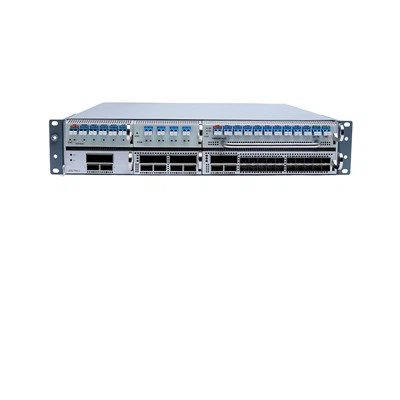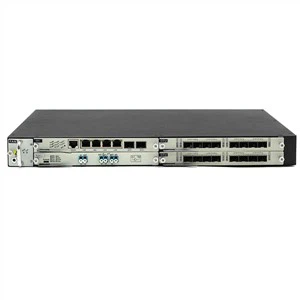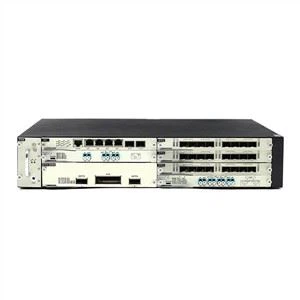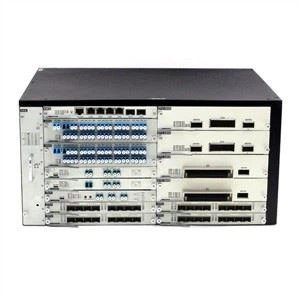50/125μm and 62.5/125μm multimode fibers are common types of optical fiber in optical transmission networks, of which 50μm and 62.5μm represent the core diameter used for transmitting optical signals in the fiber. 125μm represents the diameter of the cladding, which protects the core and limits the propagation of light within the core. Although the cladding size of the two kinds of multimode fibers is the same, the different core diameters make their bandwidth different. So, can these two multimode fibers be mixed? What effect will it have on the transmission performance of optical fiber?

According to ISO 11801, there are five types of multimode fiber: OM1, OM2, OM3, OM4 and OM5. The core diameter of OM1 multimode fiber is 62.5μm, and the core diameter of the remaining four kinds of multimode fiber is 50μm. These five types of multimode fiber are different in transmission rate, transmission distance, sheath color and other aspects. The smaller the core diameter is, the higher the transmission rate can be achieved and the longer the transmission distance is.
Why multimode fiber mix?
A 62.5μm multimode fiber is based on LED, usually used for 10/100Mbps Ethernet.
However, with the continuous upgrading of the network rate, the MULTI-mode fiber with LED as the light source is far from meeting the transmission requirements of the high speed network. A 50μm multimode fiber with VCSEL as the light source is presented. Compared with LED light source, VCSEL 50μm multi-mode fiber has higher power and higher quality laser output. Therefore, 50μm multimode fiber is more and more widely used. Although 50μm multimode fibers are currently installed in many large networks (such as data centers), there are still many applications that require 62.5μm multimode fibers, so there is an increasing demand for mixing 50μm and 62.5μm multimode fibers.
What are the problems with mixed multimode fibers?
There are two types of hybrid multimode fibers, one is where light enters a 50/125μm multimode fiber from a 62.5/125μm, and the other is where light enters a 62.5/125μm multimode fiber from a 50/125μm multimode fiber. As shown in the figure below:

In the first case, the 50/125μm multimode fiber has a smaller core diameter and can be easily coupled to the 62.5/125μm multimode fiber. In this case, the deviation and coupling Angle difference will not have much impact on the transmission of the fiber. However, when the 62.5/125μm multimode fiber is mixed with the 50/125μm multimode fiber, because of the larger core diameter of the former, the light in the 62.5/125μm multimode fiber will disperse from the core cladding of the 50/125μm multimode fiber, resulting in a partial loss. It is not recommended to mix 62.5/125μm with 50/125μm multimode fiber if the fiber loss is large.

Then, how to judge whether it is feasible to mix these two types of multimode fiber while ensuring low coupling loss? In fact, the traditional coupling loss range specifies that the acceptable coupling loss range for 62.5/125μm and 50/125μm multi-mode fiber is 0.9dB~1.6dB. If the actual loss is beyond this range, it is recommended not to mix 62.5μm multimode fiber with 50μm multimode fiber.
Although the range of coupling losses acceptable for the mixed use of 50μm and 62.5μm multi-mode fibers has been determined, we cannot know the specific values of the coupling losses of these two types of multi-mode fibers without testing based on actual link conditions. Therefore, fiber manufacturers and related research institutions will test the multi-mode fiber in different situations to prove its feasibility.
Thousands of tests have shown that although 50μm and 62.5μm multi-mode fibers have different laser sources, they are fully compatible, but it is recommended that you do not mix different types of fiber in a single link. Otherwise, be prepared for the possibility of large link losses. If the losses are within your acceptable range, you can mix 50μm and 62.5μm multi-mode fibers as appropriate.
Multi-mode fiber compatibility with different bandwidth/different fiber manufacturers
Not only the compatibility of 62.5μm and 50μm multi-mode fibers is important, but the compatibility of multi-mode fibers with different bandwidth or from different suppliers also needs to be paid attention to. If you want to use a traditional 62.5μm multimode fiber to increase the bandwidth of the entire network, instead of mixing it with a 50μm multimode fiber, consider the compatibility of different bandwidth fibers. Some fiber manufacturers have shown that fiber and link can be used together, even if they have different bandwidths, as long as they meet industry standards.





















